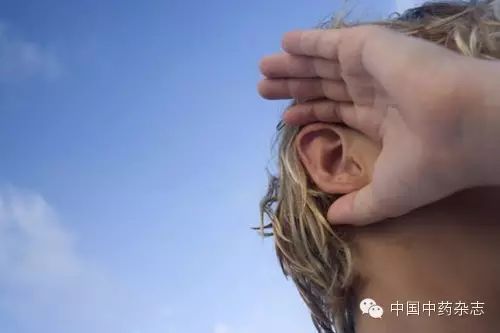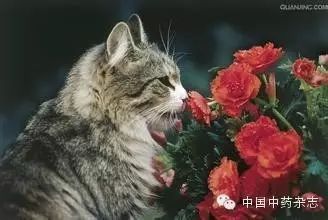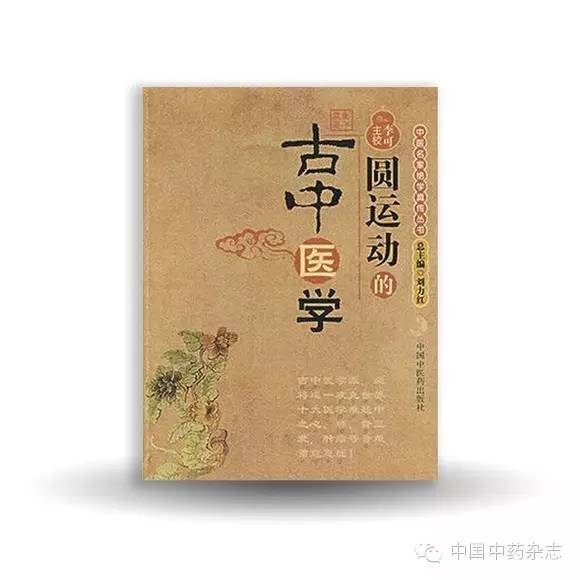The five senses of the human body are the main organs for perceiving external phenomena. Traditional Chinese Medicine (TCM) fully utilizes vision, hearing, smell, and touch to obtain various external signs of diseases. Today, we will discuss how to acquire disease information through auditory and olfactory means. Since both hearing and smelling can be represented by the term “wen” in classical texts, the method of obtaining disease information through listening and smelling is also known as “wen zhen” (闻诊).

The sounds produced by the human body are the result of the coordinated work of the mouth, tongue, teeth, lips, nose, throat, epiglottis, and lungs. Healthy individuals share a common characteristic in their voices: they sound natural, with a harmonious tone that balances strength and softness. However, there are differences in the sounds produced based on gender, age, constitution, and emotions.
For example, men’s voices are generally coarse and deep, while women’s voices are finer and clearer. Children’s voices are sharp, and the voices of the elderly are deep and resonant. Weak individuals tend to have softer voices, while strong individuals have louder voices. Joyful sounds are light and pleasant, while angry sounds are harsh and heavy. Sad sounds are mournful and intermittent, fearful sounds are faint and trembling, and affectionate sounds are gentle and soothing. All these variations are considered normal.
When the vocal organs themselves undergo pathological changes, the sounds produced will also change accordingly. For instance, stroke patients may experience slurred speech due to a stiff tongue or facial asymmetry, leading to unclear speech. Vocal cord diseases (such as vocal cord polyps or nodules) can cause hoarseness, and patients with missing teeth may have abnormal speech due to air leakage. These abnormalities in sound due to changes in the vocal organs are discussed in detail in Western medicine.
In TCM, the understanding of sound is based on changes in sound to assess the abundance and function of substances within the body. This reflects the holistic thinking of TCM. If a music player lacks power, the sound quality will be affected. Similarly, the human voice requires adequate material support to function normally and harmoniously. When substances such as yuan yin (元阴, original yin), yuan yang (元阳, original yang), qi (气, vital energy), blood (血), and body fluids (津液) are depleted, the quality and tone of the voice will also change. For example, robust individuals often have loud and clear voices, while those who are weak or have chronic illnesses tend to have softer voices. Therefore, it can be concluded that the substances of yuan yin, yuan yang, qi, blood, and body fluids are the material basis for sound production, and different changes in sound can reflect the abundance or deficiency of these substances within the body.
A sound generally possesses four attributes: pitch, timbre, intensity, and volume. Any change in these attributes is closely related to the abundance or deficiency of substances within the body. Below, we will examine how various bodily substances affect sound.

Pitch. A high pitch results in a clear and sharp sound, while a low pitch results in a coarse and deep sound. It is generally believed that the pitch is directly related to the physical characteristics of the vocal cords. Longer, looser, and thicker vocal cords produce lower pitches, which is typical for men. Shorter, tighter, and thinner vocal cords produce higher pitches, which is typical for women. However, the characteristics of vocal cords can change. For example, eunuchs in feudal society had higher-pitched voices due to the castration of their reproductive organs, resulting in vocal cord characteristics similar to those of women. TCM believes that the relative abundance of yuan yin (such as estrogen) and yuan yang (such as testosterone) determines the pitch. If yuan yin is relatively abundant, the voice is often sharp and clear, as in women; if yuan yang is relatively abundant, the voice is often coarse and deep, as in men. Changes in the relative abundance of yuan yin and yuan yang will also lead to corresponding changes in pitch, as illustrated by the previous example. Therefore, by assessing pitch, we can infer the relative relationship and sufficiency of yuan yin and yuan yang within the body. If a woman has insufficient yuan yin or excessive yuan yang, her voice may become coarse and deep, resembling that of a man; conversely, if a man has insufficient yuan yang or excessive yuan yin, his voice may become sharp and thin, resembling that of a woman.
Timbre. Timbre primarily refers to the roundness of the sound. A good timbre results in a rich and full sound, while a poor timbre results in a hoarse, rough, dry, and thin sound. The quality of timbre is mainly related to the nourishing effects of yuan yin, body fluids, and blood. When body fluids and yin blood are sufficient, the sound is round; when they are depleted, the sound becomes hoarse. We have all experienced that after speaking for a long time, our mouths become dry, and our voices may become hoarse. This is due to the consumption of body fluids during speech, leading to a lack of moisture in the vocal organs. Drinking water can help restore the original roundness of the voice. Therefore, the nourishing effects of body fluids and yin blood on the vocal organs are crucial for ensuring a round timbre, and we can also assess the sufficiency of these nourishing substances based on the quality of the sound.
Intensity. Intensity refers to the strength of the sound, which depends on the magnitude of the external force causing the vibration of the object. For example, when plucking a guitar string, a light touch produces a weak sound, while a strong touch produces a loud sound. For the human body, this primarily relates to the size of the exhaled airflow during speech and the pressure exerted on the vocal organs. A larger airflow and greater pressure result in a stronger sound, while a smaller airflow and less pressure result in a weaker sound. The size of the airflow and the pressure on the vocal organs are related to qi! In the chapter on basic substances of the human body, we mentioned that qi is the movement of substances and molecules generated by the interaction of yuan yin and yuan yang, and through this movement, the effects produced by their interaction are transmitted to various organs, resulting in various life activities. The energy required for sound production comes from qi; when qi is abundant, the airflow is larger, the pressure on the vocal organs is greater, and the sound intensity is stronger. Conversely, when qi is deficient, the sound is weaker. Therefore, by assessing the intensity of sound, we can infer the sufficiency of qi within the body. Since qi is the result of the interaction between yuan yin and yuan yang, the intensity of sound can also reflect the sufficiency of these two substances.
Volume. Volume refers to the loudness of the sound, which is directly related to intensity. A strong intensity results in a large volume, while a weak intensity results in a small volume. Thus, the size of the volume is closely related to qi within the body. We often describe a person with a loud voice as having “sufficient middle qi,” which reflects this principle. Additionally, the lungs are another organ related to volume. The lungs function similarly to a resonating chamber in a musical instrument, amplifying the sound effectively. Therefore, when the resonating function of the lungs diminishes, it can lead to changes in sound quality, resulting in hoarseness or even loss of voice. There are two common situations where lung-related issues lead to reduced volume or loss of voice: one is hoarseness or loss of voice due to a cold or cough; the other is hoarseness or loss of voice due to chronic illness and deficiency. In TCM, these two conditions are interestingly named “jin shi bu ming” (金实不鸣, metal solid does not sound) and “jin po bu ming” (金破不鸣, metal broken does not sound). What do these terms mean? We know that the lungs belong to the metal element in the five elements, similar to an ancient bronze bell, which is hollow to ensure that it produces a loud and far-reaching sound when struck. When we catch a cold, external wind-cold or wind-heat pathogens, or internal phlegm and turbid substances can obstruct the lungs, leading to a decrease or loss of their resonating function, resulting in hoarseness or loss of voice. This is akin to filling the hollow chamber of a bronze bell with other objects, preventing it from producing its original loud and far-reaching sound, replacing it with a dull and short sound. Thus, TCM refers to this condition as “jin shi bu ming.” What about “jin po bu ming”? For a bronze bell to produce a loud and far-reaching sound, its wall must be intact to create effective resonance in the hollow chamber. If the wall is damaged, its resonating function will be compromised, leading to a “broken sound.” For the lungs, the qi’s consolidating function (refer to Chapter 6) is crucial for maintaining the integrity of the resonating chamber. If chronic illness leads to excessive consumption of the body’s righteous qi, compromising the consolidating function of qi, it is akin to the wall of the bronze bell being shattered, inevitably leading to a weakened or lost resonating function, resulting in hoarseness or loss of voice. TCM refers to this condition as “jin po bu ming.”
Diseases can affect the pitch, timbre, intensity, and volume of normal speech, and can also lead to the emergence of certain abnormal sounds, such as coughing, wheezing, hiccups, belching, sighing, bowel sounds, and sneezing. The appearance of these sounds is often related to specific diseases, allowing us to infer the types of diseases based on these sounds. For example, a cough often indicates that the lungs are invaded by pathogenic factors and cannot descend properly; wheezing indicates bronchial spasms and obstructed airflow; hiccups are sounds produced by diaphragm spasms; belching indicates poor digestion in the spleen and stomach, with turbid qi rising; sighing often reflects emotional depression; bowel sounds indicate water retention in the intestines; and sneezing often indicates the early stages of a cold. The emergence of these abnormal sounds can serve as a basis for diagnosing the types of diseases, and we can also infer the nature of the diseases based on the different characteristics of these sounds. For instance, loud and coarse sounds often represent excess conditions (where the body’s righteous qi has not been depleted), while soft and weak sounds often represent deficiency conditions (where the body’s righteous qi has been depleted).
For diseases that produce sounds, the sound can serve as a primary basis for diagnosing and prescribing treatment. The most typical example is coughing. Coughing is commonly associated with lung diseases but is also closely related to the conditions of other organs. The “Neijing” states, “All five organs can cause coughing, not just the lungs,” and proposes the theory of “coughing from the lungs, heart, spleen, liver, and kidneys” based on accompanying symptoms. Since coughing is a sound-producing disease, and this sound often contains a wealth of useful information about the disease, studying and distinguishing the characteristics of the sounds produced during coughing can greatly aid in identifying and diagnosing the root cause of the cough.

In previous chapters, we have repeatedly emphasized that the various signs exhibited by diseases can more accurately reflect the essence of the disease. Therefore, the different characteristics of coughing sounds can often directly and truthfully reflect the true nature of the disease. For instance, a dull and heavy cough, or a cough with a “water chicken” sound in the throat, often indicates phlegm and turbidity in the lungs or trachea; a paroxysmal cough with a loud sound, especially when aggravated by wind, often indicates the early stages of a cold with wind invading the lungs; a clear and crisp cough often indicates dryness injuring the lungs, or a deficiency of body fluids and yin blood, leading to a lack of moisture in the lungs and trachea; a persistent cough that leads to nausea or vomiting, or coughing up blood, with a “heron” sound at the end, often indicates whooping cough in children; a cough that sounds like a dog barking often indicates diphtheria; a low and weak cough with ineffective expectoration and foamy phlegm often indicates qi deficiency; a high-pitched cough producing an “empty” sound often indicates deficiency of yuan yin and floating of yuan yang. The different characteristics of these coughing sounds provide significant guidance for treatment. For example, a cough with a tight and heavy sound, accompanied by phlegm sounds in the throat, should be treated with phlegm-transforming methods to stop the cough; if the cough is dry with no phlegm, nourishing yin and moistening the lungs should be the approach; and if the cough sounds like a drum being struck, producing an “empty” sound, then nourishing yin and subduing yang should be the treatment.
A colleague of mine once shared a case that left a deep impression on me. The patient was a staff member at our hospital who had been coughing for over a month with no improvement despite various treatments. One day, he sought my colleague’s help. At that time, my colleague was treating other patients, so the patient waited nearby and coughed a few times. The sound of his cough was like a drum being struck, producing an “empty” sound. Upon hearing his cough, my colleague had a clear understanding of his condition. This cough sound was a significant manifestation of deficiency of yuan yin and floating of yuan yang. When reviewing the previous prescriptions from other doctors, they were all aimed at transforming phlegm and clearing heat, which explained the lack of effectiveness. My colleague advised the patient to buy some Schisandra (五味子, wǔ wèi zǐ) granules and take them, asking him to report back in three days. The next day, the patient returned to my colleague, saying he couldn’t find the Schisandra granules. My colleague then prescribed a formula to nourish yin, subdue yang, and consolidate the body, which he took for five days, and his cough completely disappeared.
Inspired by my colleague, I later paid more attention to the method of distinguishing sounds in cough treatment, especially for this “drum-like” cough sound, which had not been described in detail in previous TCM texts. After learning from my colleague’s experience and applying it clinically, the results were very good. A friend’s father had been coughing for over half a month without improvement and called me for advice. I said, since I couldn’t see his tongue coating or feel his pulse over the phone, let me listen to his cough. His cough was exactly the “empty” sound like a drum being struck. I said, I will prescribe three doses of medicine for you. The friend’s father replied that making traditional Chinese medicine was too troublesome and asked if there were any convenient patent medicines available. I thought for a moment and said, that’s fine, I’ll teach you a method: go to the supermarket and buy some dried plums (乌梅, wū méi), and eat 3-5 pieces each time, twice a day. Call me back in three days to report on your condition. Three days later, he called to tell me that this method was wonderful; after the first day of eating, his cough had significantly improved, and by today, he was basically no longer coughing. I was surprised that dried plums could be so effective. I explained that based on the characteristics of his cough sound, it indicated deficiency of yin and floating of yang. Dried plums are sour and have astringent properties, which can help the floating yuan yang return to the kidneys, thus curing his cough. A common food effectively treated a cough that had persisted for over half a month; this illustrates the remarkable ability of TCM to diagnose diseases through sound!
That concludes our discussion on diagnosing diseases through sound. Next, we will discuss olfactory diagnosis in TCM. The abnormal odors produced by diseases manifest in two aspects: one is the abnormal odors emitted by the body itself, and the other is the abnormal odors of excretions. The abnormal odors emitted by the body can be detected through smell, while the abnormal odors of excretions often require patient inquiry for detailed understanding. Common abnormal odors emitted by the body include halitosis, sweat odor, body odor, and nasal odor.

Halitosis. Normal individuals do not emit foul odors while speaking. Diseases of the oral cavity or digestive system can lead to halitosis. Halitosis caused by oral diseases is often due to putrefactive substances in the mouth, such as dental caries, poor oral hygiene, oral ulcers, or malignant tumors in the oral cavity. Halitosis caused by digestive system diseases is often due to indigestion, leading to the fermentation of food within the body and the emission of foul odors through the esophagus from the mouth. Halitosis caused by digestive system diseases can become more pronounced with belching.
Sweat Odor. Excessive sweating can produce a foul odor. For patients with fever, the presence of sweat odor often indicates that they are sweating, which can provide diagnostic information.
Body Odor. If a patient emits a putrid odor, it often suggests the presence of ulcers or necrotic sores on the body.
Nasal Odor. Foul odors from the nose, often accompanied by persistent purulent nasal discharge, indicate sinusitis or rhinosinusitis, which TCM refers to as “bi yuan” (鼻渊).
The abnormal odors of excretions primarily refer to changes in the odors of urine, feces, phlegm, and women’s vaginal discharge. For example, thick and purulent phlegm with a foul odor often indicates lung abscess, referred to in TCM as “lung yin” (肺痈); foul-smelling feces often indicate internal heat; feces with a fishy odor often indicate internal cold; feces with a sour odor often indicate undigested food; yellow, turbid, and foul-smelling urine often indicate internal heat; foul-smelling vaginal discharge in women often indicates internal heat; and vaginal discharge with a fishy odor often indicates internal cold.
From the abnormal odors of excretions, we can also observe a pattern: foul odors in excretions often indicate the presence of internal heat, while excretions with no odor or a fishy odor often indicate internal cold. This is quite understandable; food tends to rot and emit foul odors in hot weather, while it can be preserved for longer periods in cold weather. Therefore, when there is heat in the body, the oxidation and decomposition processes of substances accelerate, leading to increased reproduction of putrefactive bacteria, resulting in foul odors in excretions. Conversely, when there is cold in the body, the oxidation and decomposition processes slow down, leading to excretions that are either odorless or have a fishy odor. This characteristic of excretions is an important basis for clinically distinguishing the cold and heat nature of diseases.
Excerpted from “Approaching Traditional Chinese Medicine,” this article has been edited and published by the WeChat platform of the Chinese Journal of Traditional Chinese Medicine (CJCMMYC). Please respect the labor of others, and when reprinting from the public account, be sure to indicate the source and WeChat ID.
Today, I recommend the book “The Ancient Chinese Medicine of Circular Motion”. Click Read the Original to purchase directly.

Comments from readers:
“This book is good. Peng Zi’s prescriptions are relatively light, lively, yet cautious and careful, explaining the circular motion of the human body through the twenty-four solar terms, making it relatable and easy to understand, very good.”
“It emphasizes the unity of heaven and humanity in TCM. Compared to many so-called old thoughts, it is more thorough. Man follows the earth, the earth follows heaven, heaven follows nature. Thinking in terms of the unity of heaven and humanity is more like TCM, rather than the modern TCM that has added many rigid frameworks and claims to be orthodox.”


